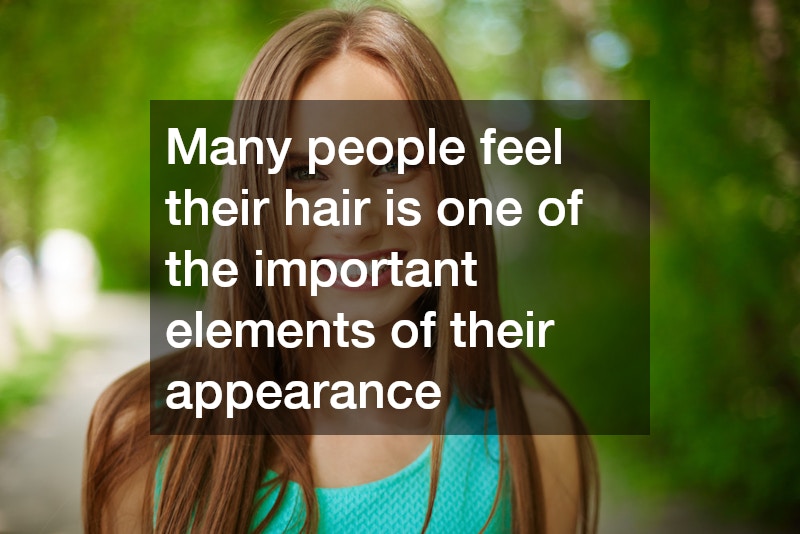
Many people feel their hair is one of the important elements of their appearance. Some take great pride in their hairstyle and consider it as part of their personal wardrobe. As we age, many of us experience hair thinning or loss; for many – especially men – thinning hair can feel like a blow to their identity. Once you experience significant areas of the visible scalp, you may consider hair loss treatment.
As men age, some of their common hair problems begin with graying hair. Their hair may also become coarse and brittle, and they will begin to thin at the temples. Once hair thinning becomes the predominant feature of their hairstyle, it can be time to consider a hair replacement strategy.
If you go to a dermatologist for your hair loss, they will begin with a scalp test. This procedure will scrape a few cells from your scalp or pluck some hair to determine whether an infection has caused your hair loss. There are several replacement methods, including medication or light therapy. Whichever treatment is used, signs of new hair growth will first include soft, fuzzy hairs beginning to grow, and you’ll see fewer hairs falling out. Find the best cosmetic dermatologist to make sure you feel your best each day.
Aside from those who shave their heads bald, everyone has hair on their heads, and most people care a great deal about the appearance and quality of their hair. Popular hairstyles and colors go in and out of fashion for men and women alike, and the market for hair car products such as gels, dyes, and shampoos is enormous around the world. At the same time, human hair is a natural product, and hair has some natural tendencies that adults generally do not like. Men and women, especially men, will face hair thinning and balding as they age, and this process cannot be prevented or even predicted. However, while there may be not “magic potion” to restore someone’s lost hair, some other methods exist to cover thin patches or bald spots on a person’s head. Hair loss treatment methods range from hair restoration tonics to hair transplant surgery, such as FUE (follicular unit extraction) surgery. For this sort of hair loss treatment, an interested customer may look for a hair loss doctor in his or her area and ask for hair loss treatment to be done.
Adult and Hair Loss
Who is losing their hair, and how often? Today in the United States, some 35 million men and around 21 million women are experiencing hair loss, and once this process starts, it may last for 10-20 years or so. In men, male pattern baldness may affect as many as 95% of individuals, which may manifest as a receding hair line, bald spots, or thin patches of hair (or even a combination of these). Two in three men have experienced a noticeable amount of hair loss by age 35, and by age 50, some 85% of men have significantly thinning hair on their heads. Women don’t lose their hair at such high rates, but some of them do, and they don’t appreciate the results any more than men do. It has been calculated that a person must lose about half of all hairs on their head by the time hair loss has become visible, and for many adults, this tipping point will be reached.
Other numbers show how unpopular hair loss really is. According to surveys, 60% of people would rather have their hair fully restored rather than have money or friends, and nearly half of surveyed individuals would spend their entire life savings on a hypothetical method of fully restoring their lost hair. And as mentioned above, while lost hair cannot be regenerated out of nothing, hair loss treatment methods today are an approximation that many customers take an interest in. This may include FUE transplants, for example.
Getting Hair Loss Treatments
A customer interested in hair replacement may look up local hair clinics and hair doctors, and they can get recommendations from their physician or even the staff at their local hair salon for this reference. And once a patient finds such clinics and signs up for hair transplants, they may expect a minimally invasive surgical procedure that tends to produce positive results. What does this entail? During FUE transplants, the doctor will remove surface layers of skin that contain natural hair follicles in groups of one to six. These hair units are then moved to the bald spot or thin patch of hair and planted there, and the hairs will be oriented so that they are consisted with how the existing hair is growing. This process may be repeated to the customer’s satisfaction, and while it does not actually add more hair, the results look natural and may fill out bald spots or thin patches. The patient may expect only minimal side effects such as minor bleeding or itchiness on the scalp afterwards, and if more serious bleeding is present, the patient may return to the clinic.
In other cases, customers at a salon may have hair wefts put into their existing hair, which may be either false or real hair. Such hair wefts’ length and color will be tailored for the customers’ existing hair, and can blend right in. Many women get hair wefts and extensions put in their hair this way, and the hair wefts may be woven in or even taped onto their scalp to keep it secure. They may be later removed if so desired.

